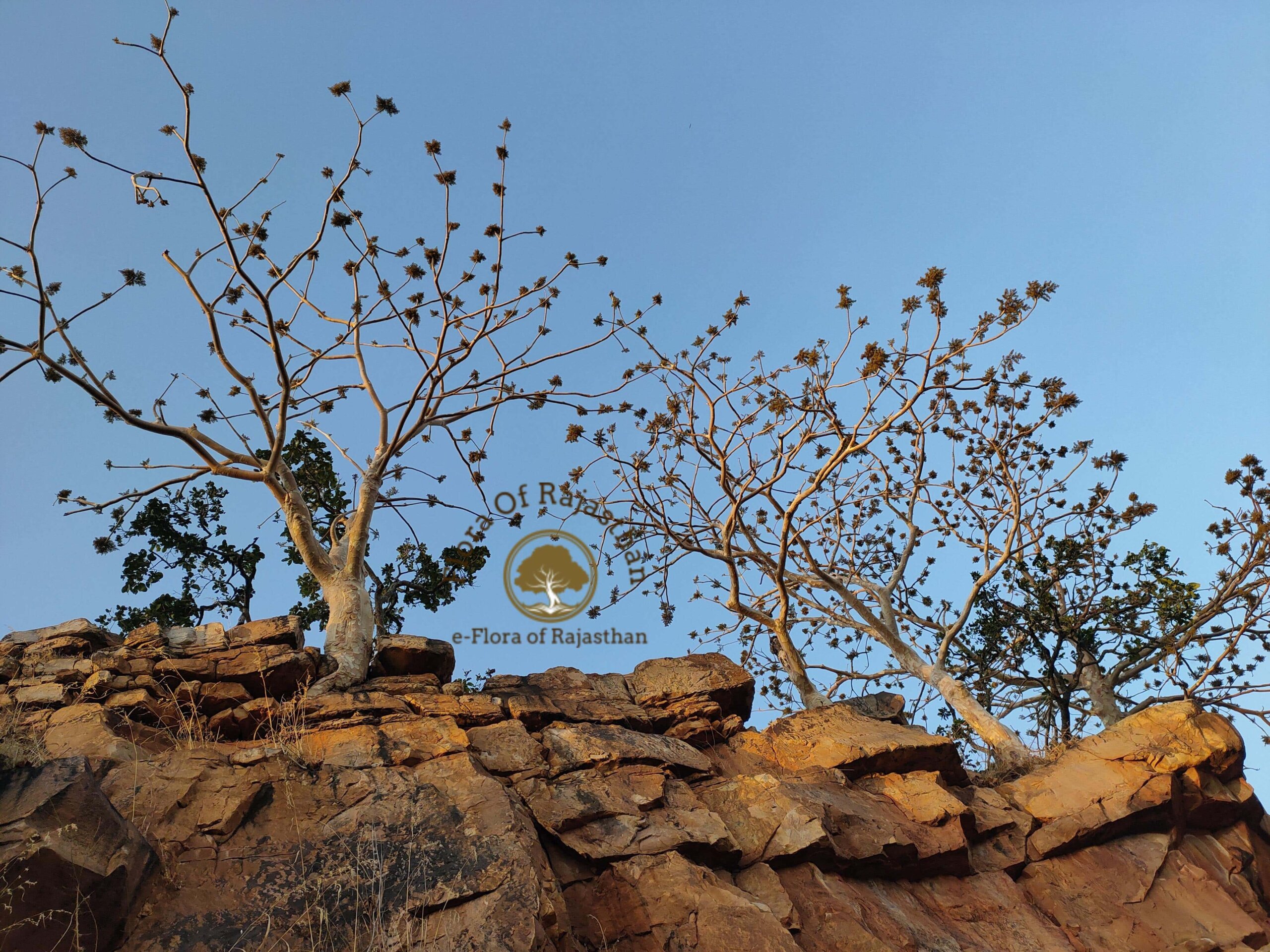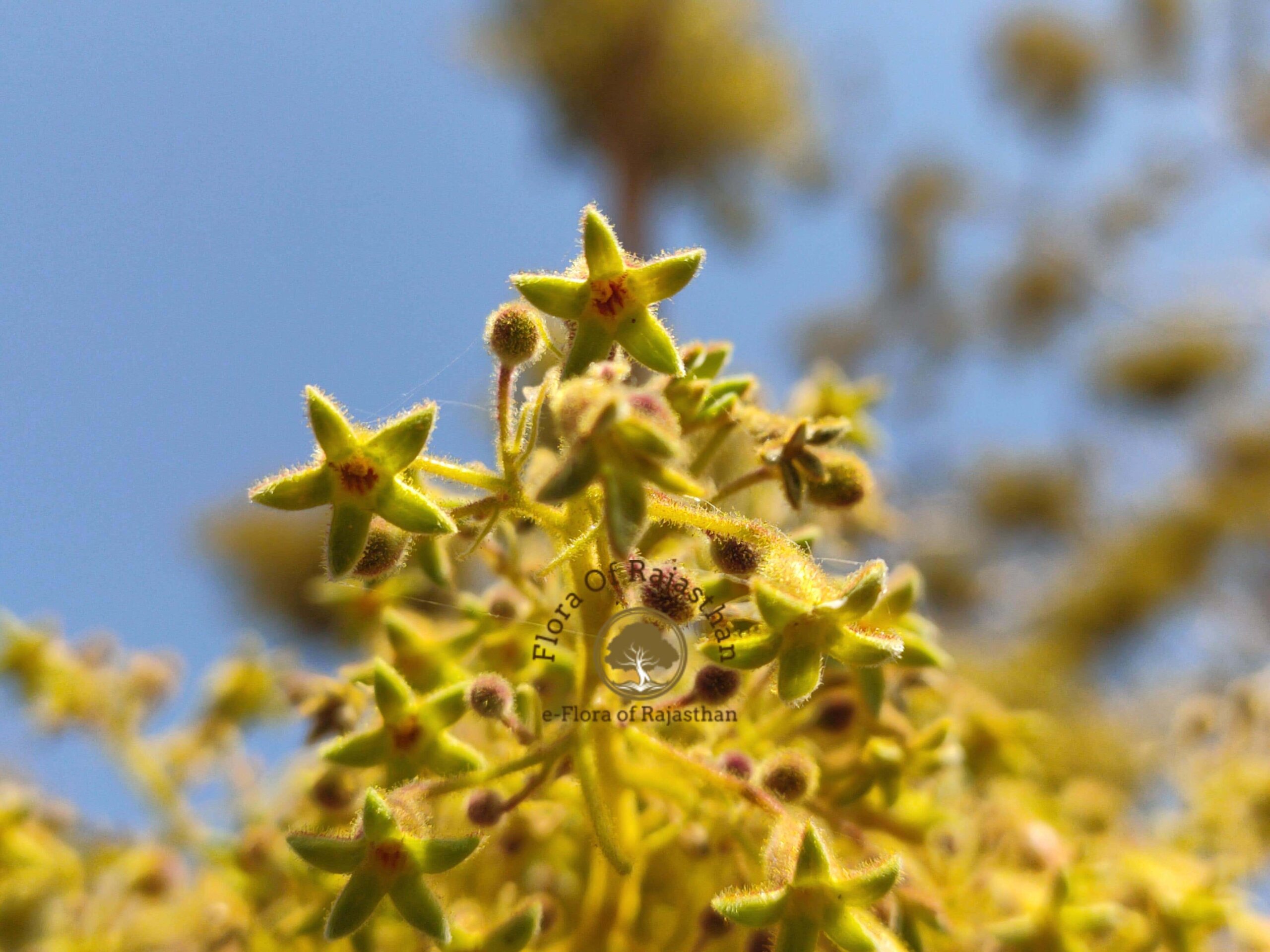IUCN Status
 : Not Applicable
: Not Applicable
- Naturally grown
-
- Gum karaya is a medium-sized, deciduous tree to 15 m in height, usually with a clean, crooked, short bole up to 2 m DBH; branches large, spreading; bark thick, greyish-white or reddish, smooth, shining with a thin, white transparent outer coat, peeling off in papery flakes. Leaves on long petioles, crowded at the ends of branches, palmately 5-lobed, 20-30 cm diameter; tomentose beneath, glabrous above, entire, acuminate; stipules caducous. Flowers greenish yellow, small, in terminal panicles; follicles 4-6, ovoid-oblong, about 2.5 cm diameter, coriaceous, red, covered with stinging hairs. Infact, the specific name urens means stinging in reference to the hairs on flowers. Fruit consists of 5 sessile, radiating, ovate-lanceolate hard, coriaceous carpels, 7.5 cm long, red when ripe, covered outside with many stiff bristles. Trees exude gum karaya used in foodstuffs as emulsifiers, stabilizers and thickeners. Seeds are eaten after roasting. Seeds and young tender roots are eaten in times of famine.
- Fl.-Fr.: Dec.-May
- PC: © Sonu Kumar
- Source: Foi, efoi, powo,ibp, iNat
-

DocScanner Feb 27, 2025 09-13_2
Habitat -

DocScanner Feb 27, 2025 09-13_4
Flowering -

DocScanner Feb 27, 2025 09-13_3
Newly emerging fruits
